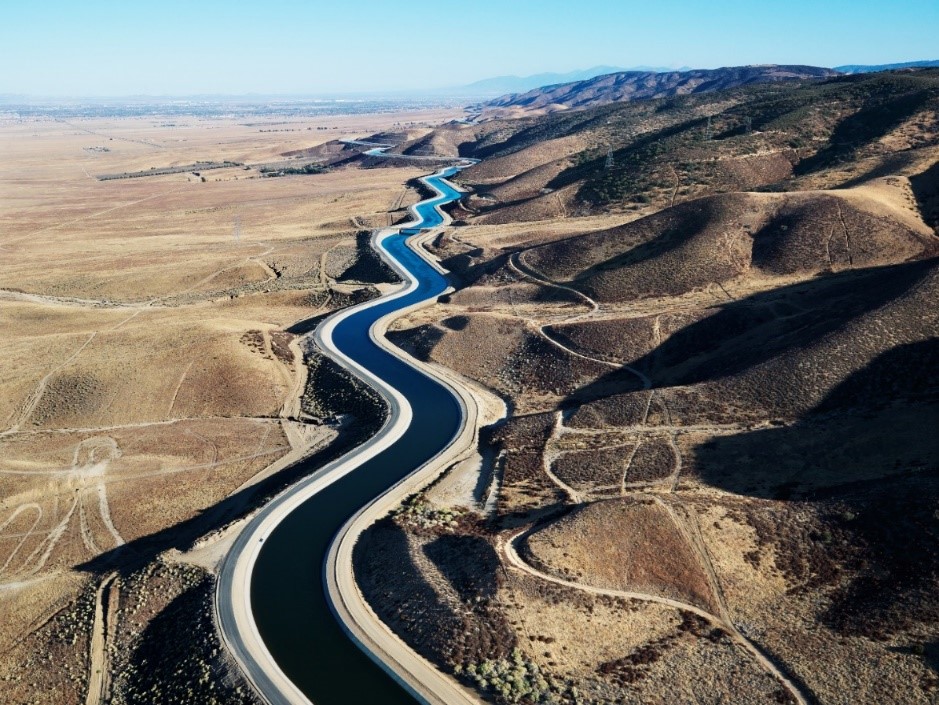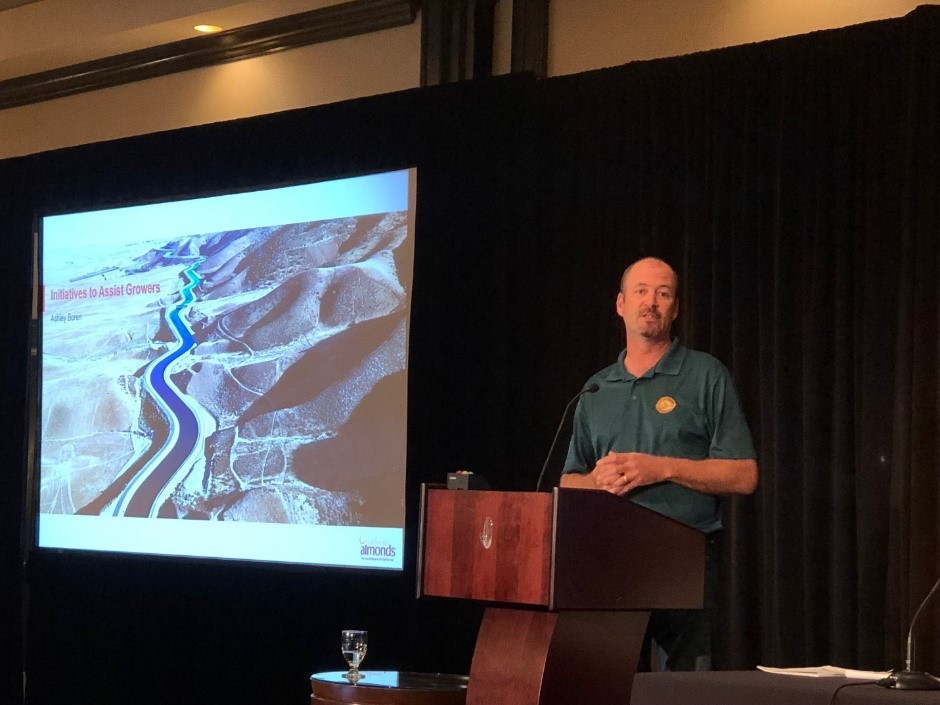Ask any almond grower to name one of the most prevalent topics in California agriculture and without a doubt they’ll give you this answer — water.
 On May 8, more than 200 almond growers and industry members gathered in Modesto to discuss the key topic of water at Navigating the Waters. Hosted by the Almond Board of California (ABC), this summit focused on critical issues impacting farming, including the Sustainable Groundwater Management Act (SGMA), groundwater recharge, surface water management, salinity and more.
On May 8, more than 200 almond growers and industry members gathered in Modesto to discuss the key topic of water at Navigating the Waters. Hosted by the Almond Board of California (ABC), this summit focused on critical issues impacting farming, including the Sustainable Groundwater Management Act (SGMA), groundwater recharge, surface water management, salinity and more.
“Water is the lifeblood of almonds and agriculture,” said Richard Waycott, president and CEO, ABC. “Water use efficiency and getting the most ‘crop per drop’ is the heart and soul of all of us here.”
Waycott’s opening remarks set the tone for the water summit: as agriculture rises to the challenge of feeding more people with scarcer resources, efficient and effective management of those resources will prove imperative.
Taryn Ravazzini, deputy director for special initiatives, California Department of Water Resources, acknowledged how far California agriculture has come, pointing to almond growers’ success of using “33% less water per pound of nuts in the last 20 years.” She then turned to the years ahead and how SGMA will help build up the bank of available water resources.
 More than 200 almond growers and industry members gathered May 8 in Modesto to discuss the key topic of water at Navigating the Waters.
More than 200 almond growers and industry members gathered May 8 in Modesto to discuss the key topic of water at Navigating the Waters.
“Groundwater is a drought buffer that we can turn to when surface water is scarce,” Ravazzini said. “There is no single method to manage this natural resource. We need to look at a portfolio of methods to manage water.”
Ravazzini explained that unlike surface water, which is centralized and managed by the state, groundwater management is locally controlled. Groundwater Sustainability Agencies (GSAs), empowered by SGMA, manage basins and adopt Groundwater Sustainability Plans (GSPs) for crucial groundwater basins in California. There are very few unmanaged areas, Ravazzini said, with 99% of California covered by more than 260 GSAs.
The Madera Irrigation District (MID) GSA served as an example of the prospects for GSPs. Dina Nolan, assistant general manager, MID, updated event attendees on MID’s actions, to date, to mitigate undesirable results of depleting groundwater. Through partnerships with local agencies and non-profits, improvements to facilities and outreach to landowners and stakeholders, they’re helping ensure the long-term viability of irrigated agriculture in the district.
“We’re not waiting for [final] groundwater sustainability plans,” said Nolan. “We’re doing projects now.”
 Dexter Long, Hilltop Ranch, addressed growers on the importance of partnerships during a closing panel at ABC’s Navigating the Waters. Long sits on the Organic Advisory Panel at the ABC.
Dexter Long, Hilltop Ranch, addressed growers on the importance of partnerships during a closing panel at ABC’s Navigating the Waters. Long sits on the Organic Advisory Panel at the ABC.
In balance with groundwater, surface water remains an important source for California and efforts are underway to increase surface water storage. As testament, California water officials are expected to spend $2.7 billion on water-supply projects. With all the moving parts of water policy, David Orth, principal, New Current Water and Land, told summit attendees it’s time to engage.
“SGMA requires robust stakeholder engagement,” Orth said, adding that GSAs must develop a process for public engagement and active involvement. He offered attendees a few strategies to staying plugged in, including developing an understanding of groundwater basin conditions, attending GSA meetings, joining boards, building alliances with common interests and reviewing proposed GSPs.
Beyond water supply for agricultural uses, attendees also received updates on efforts to improve overall water quality and drinking water supply, including CV-SALTS and Senate Bill 623. Both initiatives focus on salt and nitrate levels in the Central Valley, and they will bring changes to farms throughout California.
“When we use water, we concentrate salt,” said David Cory, chairman of the Central Valley Salinity Coalition. “We’re looking for programs to assure safe drinking water and sustain the agricultural economy.”
No matter the initiative or issue, cooperation is essential. Water use in the Central Valley continues to be a prominent and complex subject, and answers won’t come from one farm or group alone. As California almond acreage increases and production continues to rise, collaboration is more important than ever.
“We want to do everything we can with the resources and talent we have to do all we can for almonds,” Waycott said. “We accept the responsibility of being the state’s leading crop.”
Before leaving the summit, attendees were encouraged to remain active in decisions impacting water use in California. Understanding which GSA a grower belongs to, attending meetings, reading notices and commenting on GSPs as they are developed are all central to staying informed. The landscape is changing, but growers have the opportunity to remain involved in the process.
To learn more about water use in California, visit Almonds.com/Water.